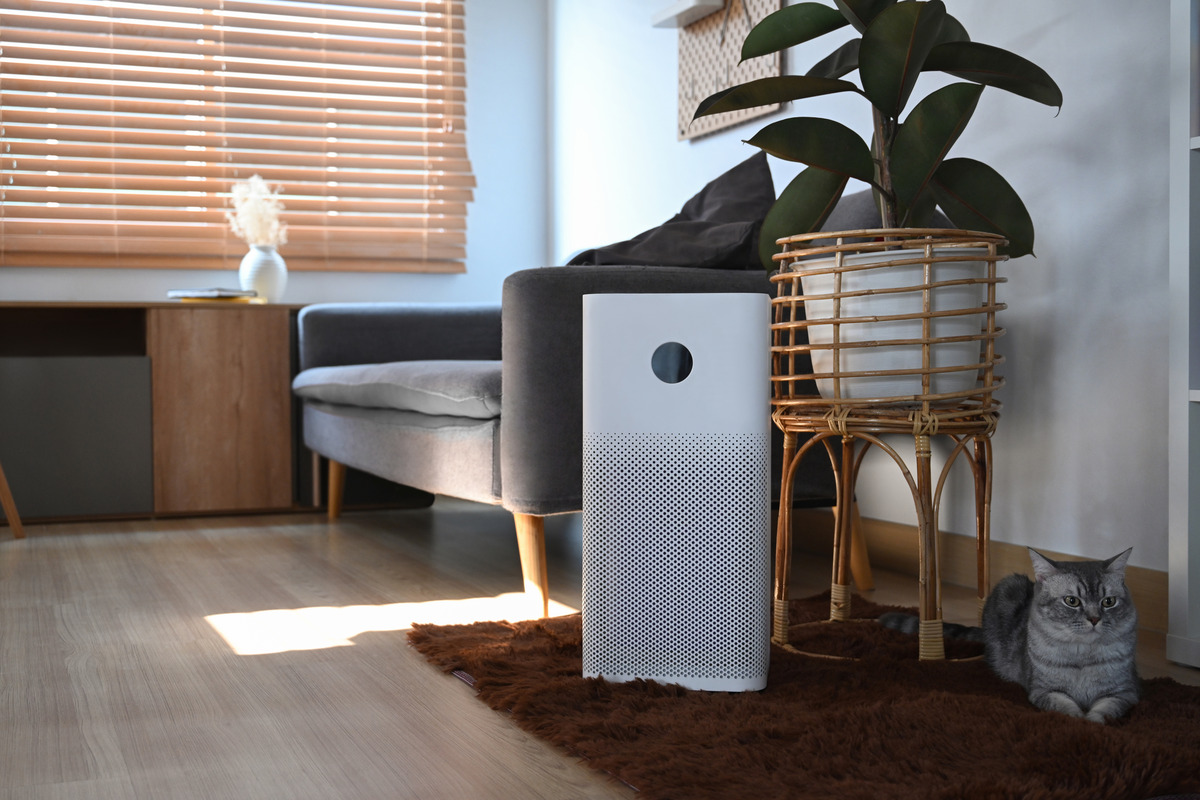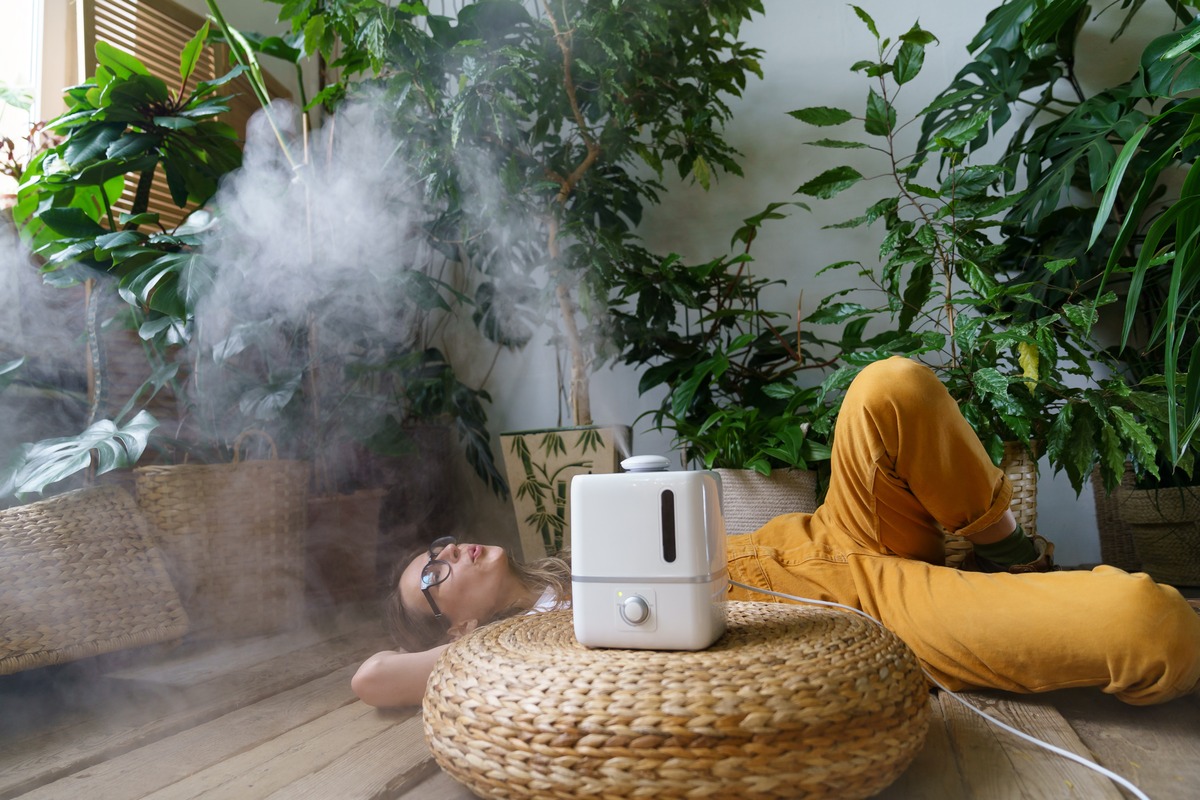What Are the Most Promising Technologies for Air Purification?

Another innovative technology making waves is ultraviolet germicidal irradiation (UVGI). UVGI uses ultraviolet light to disinfect the air by neutralizing bacteria, viruses, and other harmful microorganisms. It works on the principle that UV light can disrupt the DNA of these pathogens, rendering them harmless. This technology is particularly beneficial in healthcare settings and high-traffic areas where airborne infections can spread quickly.
Ionizers, or air ionization technologies, are also gaining popularity. These devices release negative ions into the air, which attach themselves to positively charged particles like dust and allergens. Once attached, these particles become too heavy to remain airborne and settle down, effectively cleaning the air. Ionizers are often used in conjunction with other filtration technologies to enhance overall air purification efficiency.
Activated carbon filters are another effective method for removing volatile organic compounds (VOCs) and odors from the air. Activated carbon has a porous structure that can absorb a wide range of gases and chemicals, making it ideal for environments with strong odors or chemical fumes. This technology is commonly used in air purifiers designed for homes and offices.
While there are several promising technologies for air purification, choosing the right one depends on factors such as the specific pollutants you need to target, the size of the area to be purified, and any specific health concerns. By leveraging these advanced technologies, we can create cleaner and healthier indoor environments for everyone.
Revolutionizing Clean Air: Exploring Next-Gen Technologies in Air Purification

One of the most exciting developments in air purification is the advent of high-efficiency particulate air (HEPA) filters. These filters are like vigilant gatekeepers, trapping even the tiniest particles that can pollute indoor air. Imagine them as microscopic bouncers, stopping pollen, dust mites, and pet dander from crashing your indoor party. With HEPA filters, the air you breathe is not just cleaner—it’s purer, free from the microscopic hitchhikers that can trigger allergies and respiratory issues.
Another groundbreaking technology making waves in the air purification industry is UV-C light sterilization. Picture this: a beam of ultraviolet light so powerful that it obliterates bacteria and viruses on contact, rendering them harmless. It’s like having a tiny sun inside your air purifier, zapping germs away with the efficiency of a superhero. UV-C technology is particularly appealing for those concerned about airborne pathogens, offering peace of mind in the form of sterilized air.
Ionization is yet another star player in the quest for cleaner indoor air. Ionizers work by emitting negatively charged ions that latch onto positively charged particles in the air, causing them to clump together and fall out of the breathing zone. It’s akin to summoning tiny magnets that attract and neutralize airborne irritants, leaving behind air that feels lighter and fresher.
In summary, the landscape of air purification is being reshaped by these next-generation technologies. Whether it’s the precision of HEPA filters, the germ-fighting prowess of UV-C light, or the ionizing magic of negative ions, each innovation brings us closer to environments where clean air isn’t just a luxury—it’s a standard. As we continue to innovate, the future promises even cleaner, healthier air for everyone.
From Nano to Nature: Breakthroughs in Sustainable Air Filtration Systems
One of the most fascinating breakthroughs in this field is the development of nano-enabled filters. These filters utilize nanotechnology to trap even the tiniest pollutants in the air, far more effectively than traditional filters. Imagine it like a microscopic net, so fine that it captures pollutants like a skilled fisherman catching minnows in a vast ocean. This level of precision ensures that the air we breathe is purified to an unprecedented degree.
Moreover, these nano-enabled filters are designed with sustainability in mind. Unlike older filters that need frequent replacement and disposal, these new filters are durable and long-lasting. They reduce waste and are made from eco-friendly materials, minimizing their environmental impact. It’s like upgrading from a disposable plastic bag to a sturdy, reusable tote that not only lasts longer but also helps save the planet.
Another remarkable aspect of these systems is their integration with natural purification processes. Inspired by nature itself, biomimetic air filtration systems mimic the cleansing power of forests and oceans. They harness natural processes to filter out pollutants, using biological and chemical mechanisms that have evolved over millions of years. It’s akin to setting up a miniature rainforest in your home, where each plant and organism plays a vital role in maintaining a healthy atmosphere.
These advancements are not just confined to laboratories and research papers; they are making their way into everyday life. From homes and offices to hospitals and schools, sustainable air filtration systems are becoming the new standard. They offer not only cleaner air but also a promise of sustainability for future generations.
In a world where air pollution poses an ever-increasing threat to our health and environment, these breakthroughs give us hope. They show that innovation, coupled with a commitment to sustainability, can pave the way towards a cleaner, healthier planet for all of us.
The Future Breathes Clean: AI-Driven Innovations in Air Quality Management
AI, or Artificial Intelligence, has revolutionized how we approach air quality management. Traditional methods often lagged behind in accuracy and real-time data processing, but AI changes the game entirely. By harnessing the power of machine learning algorithms, AI systems can analyze vast amounts of data from sensors placed strategically across cities. These algorithms can detect patterns, predict pollution spikes, and even suggest preventive measures before the air quality deteriorates.
Picture this: a network of sensors throughout your city continuously gathering data on pollutants like particulate matter, nitrogen dioxide, and ozone levels. AI processes this data instantly, alerting authorities and citizens alike through mobile apps or digital platforms. It’s like having a personal air quality assistant that keeps you informed and safe, allowing you to plan your day without worrying about smog or allergens.
Moreover, AI doesn’t stop at monitoring. It actively contributes to cleaner air through innovations like smart traffic management. By optimizing traffic flow based on real-time pollution data, AI reduces vehicle emissions and congestion in pollution-prone areas. This proactive approach not only improves air quality but also enhances urban mobility, making cities more livable and sustainable.
Think of AI as a guardian angel for our environment, tirelessly working to ensure that future generations inherit a cleaner planet. With advancements in machine learning and sensor technology, the possibilities for air quality management are limitless. Whether it’s combating climate change or protecting public health, AI-driven innovations are paving the way towards a future where every breath we take is clean and pure.
Harnessing Light for Health: UV-C Technology’s Role in Air Disinfection
UV-C light, a type of ultraviolet light, has been scientifically proven to destroy the DNA of microorganisms like bacteria and viruses, rendering them unable to replicate and cause harm. Unlike conventional air filters that trap particles, UV-C technology goes a step further by neutralizing these pathogens at a cellular level. It’s like sending in a cleanup crew that doesn’t just sweep the floor but sanitizes every nook and cranny.
One of the key advantages of UV-C technology is its efficiency. In mere seconds of exposure, UV-C light can deactivate up to 99.9% of harmful pathogens in the air. This rapid disinfection capability makes it ideal for settings where hygiene is paramount, such as hospitals, laboratories, and even our homes.
But how does UV-C achieve such remarkable results? Think of it as nature’s own sanitizer. Just as the sun’s UV rays can cause sunburn, UV-C light penetrates the cell walls of microorganisms, disrupting their genetic material and preventing them from replicating. It’s like a precision strike against invisible enemies, ensuring that the air we breathe is not just fresh, but clinically clean.
Moreover, UV-C technology is environmentally friendly. Unlike chemical disinfectants that can leave residues or contribute to indoor air pollution, UV-C light leaves no trace once the disinfection process is complete. It’s a sustainable solution that aligns with our growing awareness of eco-friendly practices.
As we navigate a world increasingly aware of health risks, UV-C technology emerges as a beacon of hope. Its ability to purify indoor air offers a proactive approach to safeguarding public health, reducing the spread of airborne illnesses, and creating safer environments for everyone. With ongoing advancements and innovations, UV-C technology continues to illuminate the path towards healthier living spaces, where the air we breathe is as clean as the light that purifies it.
